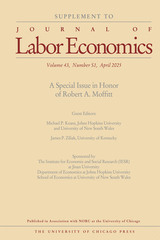9 books about Diffraction

Aperture Antennas and Diffraction Theory
E.V. Jull
The Institution of Engineering and Technology, 1981
Two powerful techniques for the analysis of aperture antennas are now used. One is based on the convenient Fourier transform relationship between aperture field and far-field radiation pattern. Here this relationship is derived from the plane wave spectrum representation of the aperture fields. In the near field of the aperture, Fourier transforms become Fresnel transforms. Far-field patterns may be predicted from near-field measurements by treating the near field as the aperture plane. In its application this method is basically the Kirchhoff approximation of diffraction theory. It is accurate for the forward fields of large antennas but cannot provide the lateral and back radiation.
[more]
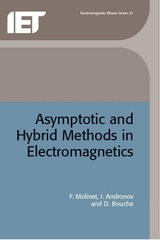
Asymptotic and Hybrid Methods in Electromagnetics
F. Molinet
The Institution of Engineering and Technology, 2005
There have been significant developments in the field of numerical methods for diffraction problems in recent years, and as a result, it is now possible to perform computations with more than ten million unknowns. However, the importance of asymptotic methods should not be overlooked. Not only do they provide considerable physical insight into diffraction mechanisms, and can therefore aid the design of electromagnetic devices such as radar targets and antennas, some objects are still too large in terms of wavelengths to fall in the realm of numerical methods. Furthermore, very low Radar Cross Section objects are often difficult to compute using multiple methods. Finally, objects that are very large in terms of wavelength, but with complicated details, are still a challenge both for asymptotic and numerical methods. The best, but now widely explored, solution for these problems is to combine various methods in so called hybrid methods.
[more]
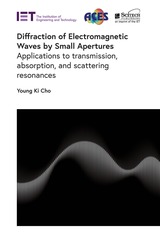
Diffraction of Electromagnetic Waves by Small Apertures
Applications to transmission, absorption, and scattering resonances
Young Ki Cho
The Institution of Engineering and Technology, 2024
This book deals with low-frequency diffraction characteristics of small aperture structures such as a narrow slit and a small hole and their periodic structures, with emphasis on the transmission maximum phenomena through those structures. A narrow slit structure in a conducting plane has been used as a simple model for a narrow slot planar antenna, for example, whereas a small hole structure has been widely used as an aperture-coupling element in a transmission cavity filter or a directional coupler in the microwave regime.
[more]

Geometrical Theory of Diffraction
V.A. Borovikov
The Institution of Engineering and Technology, 1994
The geometrical theory of diffraction (GTD) is an efficient method of analysis and design of wave fields. It is widely used in antenna synthesis in microwave, millimetre and infra-red bands, in circuit engineering and laser system design. It is a convenient tool for tackling the problems of wave propagation and scattering at bodies of complex shape. The method combines the simplicity and physical transparency of geometrical optics with high computational accuracy over a wide dynamic range of quantities analysed. The advantage of GTD is particularly pronounced in applications where the wavelength is small compared with the typical size of scatterers, i.e. in situations where the known analytical techniques - variational calculus and numerical analysis - are no longer applicable.
[more]

Geometrical Theory of Diffraction for Electromagnetic Waves
Graeme L. James
The Institution of Engineering and Technology, 1986
The continuous development of the Geometrical Theory of Diffraction (GTD), from its conception in the 1950s, has now established it as a leading analytical technique in the prediction of high-frequency electromagnetic radiation and scattering phenomena. Consequently, there is an increasing demand for research workers and students in electromagnetic waves to be familiar with this technique. In this book they will find a thorough and clear exposition of the GTD formulation for vector fields. It begins by describing the foundations of the theory in canonical problems and then proceeds to develop the method to treat a variety of circumstances. Where applicable, the relationship between GTD and other high-frequency methods, such as aperture field and the physical optics approximation, is stressed throughout the text. The purpose of the book, apart from expounding the GTD method, is to present useful formulations that can be readily applied to solve practical engineering problems. To this end, the final chapter supplies some fully worked examples to demonstrate the practical application of the GTD techniques developed in the earlier chapters.
[more]

Propagation, Scattering and Diffraction of Electromagnetic Waves
A.S. Ilyinski
The Institution of Engineering and Technology, 1993
This book describes new, highly effective, rigorous analysis methods for electromagnetic wave problems. Examples of their application to the mathematical modelling of micros trip lines, corrugated flexible waveguides, horn antennas, complex-shaped cavity resonators and periodic structures are considered.
[more]

The Scattering and Diffraction of Waves
Ronold W. P. King and Tai Tsun Wu
Harvard University Press
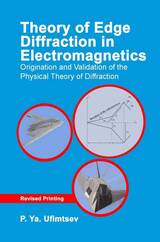
Theory of Edge Diffraction in Electromagnetics
Origination and validation of the physical theory of diffraction
P.Ya. Ufimtsev
The Institution of Engineering and Technology, 2009
This book is an essential resource for researchers involved in designing antennas and RCS calculations. It is also useful for students studying high frequency diffraction techniques. It contains basic original ideas of the Physical Theory of Diffraction (PTD), examples of its practical application, and its validation by the mathematical theory of diffraction. The derived analytic expressions are convenient for numerical calculations and clearly illustrate the physical structure of the scattered field. The text's key topics include: Theory of diffraction at black bodies introduces the Shadow Radiation, a fundamental component of the scattered field; RCS of finite bodies of revolution-cones, paraboloids, etc.; models of construction elements for aircraft and missiles; scheme for measurement of that part of a scattered field which is radiated by the diffraction (so-called nonuniform) currents induced on scattering objects; development of the parabolic equation method for investigation of edge-diffraction; and a new exact and asymptotic solutions in the strip diffraction problems, including scattering at an open resonator.
[more]
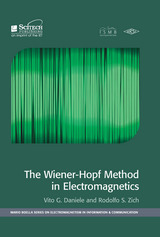
The Wiener-Hopf Method in Electromagnetics
Vito G. Daniele
The Institution of Engineering and Technology, 2014
This advanced research monograph is devoted to the Wiener-Hopf technique, a function-theoretic method that has found applications in a variety of fields, most notably in analytical studies of diffraction and scattering of waves. It provides a comprehensive treatment of the subject and covers the latest developments, illustrates the wide range of possible applications for this method, and includes an extensive outline of the most powerful analytical tool for the solution of diffraction problems.
[more]
READERS
Browse our collection.
PUBLISHERS
See BiblioVault's publisher services.
STUDENT SERVICES
Files for college accessibility offices.
UChicago Accessibility Resources
home | accessibility | search | about | contact us
BiblioVault ® 2001 - 2025
The University of Chicago Press



